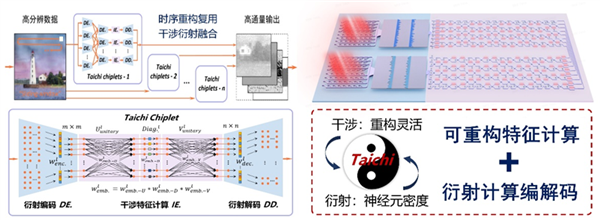Tsinghua UniversityThe new results of the research team were published in the latest issue of Science in the early morning of April 12.We pioneered a distributed broad intelligent optical computing architecture and developed the world's first large-scale interference diffraction heterogeneous integrated chip "Taichi", achieving 160 TOPS/W general intelligent computing.
According to reports, "Tai Chi"Optical ChipDuring the process of architecture development, inspiration came from the classic book "Zhouyi”, the team members took the “Tai Chi in Yijing gives birth to two opposites” as inspiration and established a new computing model, realizing the release of the powerful performance of optical computing.
Optical computing, as the name suggests, is to change the computing carrier from electricity to light, and use the propagation of light in the chip to perform calculations. With its ultra-high parallelism and speed, it is considered to be one of the most powerful competitive solutions for future disruptive computing architectures.
Optical chips have the advantages of high-speed and highly parallel computing, and are expected to be used to support advanced artificial intelligence applications such as large models.

According to Xu Zhiwu, the first author of the paper and a doctoral student in the Department of Electronics, in the "Tai Chi" architecture, the top-down encoding splitting-decoding reconstruction mechanism simplifies complex intelligent tasks and splits them into multi-channel and highly parallel sub-tasks. The constructed distributed large receptive field shallow optical network divides and conquers the sub-tasks, breaking through the inherent computational errors of multi-layer deep cascades of physical analog devices.
The paper reports that the "Tai Chi" optical chip has an area efficiency of 879T MACS/mm and an energy efficiency of 160 TOPS/N. For the first time, it enables optical computing to achieve complex artificial intelligence tasks such as recognition of thousands of objects in natural scenes and cross-modal content generation.
“Taiji optical chips are expected to provide computing power support for large model training and reasoning, general artificial intelligence, and autonomous intelligent unmanned systems.